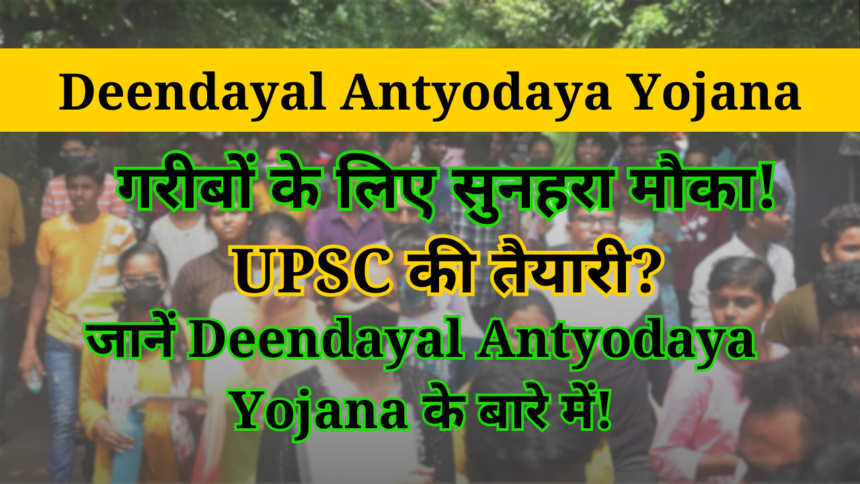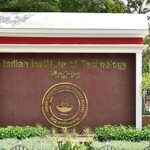On 23-07-2024, the Deendayal Antyodaya Yojana was launched by the Government of India. This scheme aims to uplift the poor and provide them with sustainable livelihood opportunities. It is an important topic for UPSC aspirants, as it covers various aspects of social and economic development. This article will explain the key features, objectives, and implementation of the Deendayal Antyodaya Yojana.
Background
The Deendayal Antyodaya Yojana was named after Pandit Deendayal Upadhyaya, a prominent Indian political leader and thinker. The term “Antyodaya” means “upliftment of the last person.” This scheme was introduced to address the needs of the poorest sections of society and ensure their inclusion in the development process.
Objectives
The main objective of the Deendayal Antyodaya Yojana is to improve the quality of life of the poor. It aims to provide them with sustainable livelihood opportunities through skill development, self-employment, and social mobilization. The scheme also focuses on enhancing the capabilities of the poor to access better livelihood opportunities and participate in the economic mainstream.
Components of Deendayal Antyodaya Yojana
The Deendayal Antyodaya Yojana has two main components:
- National Urban Livelihoods Mission (NULM)The National Urban Livelihoods Mission (NULM) aims to reduce poverty and vulnerability in urban areas. It focuses on improving the livelihoods of the urban poor through skill development, self-employment, and wage employment opportunities. The key features of NULM include:
- National Rural Livelihoods Mission (NRLM)The National Rural Livelihoods Mission (NRLM) aims to reduce poverty and create sustainable livelihood opportunities in rural areas. It focuses on mobilizing the rural poor and enhancing their capabilities to access better livelihood options. The key features of NRLM include:
- Self-Help Groups (SHGs): NRLM promotes the formation of Self-Help Groups (SHGs) among the rural poor. These groups are provided with financial assistance and training to start their own income-generating activities.
- Capacity Building: This component focuses on enhancing the skills and capabilities of the rural poor. It includes activities like providing training, promoting financial literacy, and building leadership skills.
- Livelihood Promotion: This component aims to create sustainable livelihood opportunities for the rural poor. It includes activities like promoting agriculture, livestock rearing, and non-farm activities.
- Financial Inclusion: NRLM aims to promote the financial inclusion of the rural poor. It includes activities like linking SHGs with banks, providing access to credit, and promoting savings.
- Social Inclusion: This component focuses on ensuring the inclusion of marginalized and vulnerable sections of society in the development process. It includes activities like promoting gender equality, addressing social discrimination, and ensuring the participation of the poor in decision-making processes.
Implementation of Deendayal Antyodaya Yojana
The implementation of the Deendayal Antyodaya Yojana involves various stakeholders at different levels. The Ministry of Housing and Urban Affairs is responsible for the implementation of NULM, while the Ministry of Rural Development is responsible for the implementation of NRLM. The scheme is implemented in partnership with state governments, urban local bodies, and rural development agencies.
The implementation process involves the following steps:
- Identification of Beneficiaries: The first step in the implementation of the Deendayal Antyodaya Yojana is the identification of beneficiaries. This is done through a comprehensive survey and data collection process. The aim is to identify the poorest and most vulnerable sections of society who are in need of support.
- Mobilization and Formation of Groups: The next step is the mobilization of the identified beneficiaries and the formation of Self-Help Groups (SHGs). These groups are provided with training and support to start their own income-generating activities.
- Capacity Building and Skill Development: The beneficiaries are provided with capacity building and skill development training. This includes activities like providing training in various trades, promoting financial literacy, and building leadership skills.
- Provision of Financial Assistance: The beneficiaries are provided with financial assistance to start their own businesses. This includes activities like providing credit linkage, supporting micro-enterprises, and promoting savings.
- Monitoring and Evaluation: The implementation of the Deendayal Antyodaya Yojana is monitored and evaluated at various levels. This includes activities like conducting regular reviews, tracking the progress of beneficiaries, and ensuring the effective utilization of funds.
Impact of Deendayal Antyodaya Yojana
The Deendayal Antyodaya Yojana has had a significant impact on the lives of the poor. Some of the key achievements of the scheme include:
- Poverty Reduction: The scheme has contributed to the reduction of poverty in urban and rural areas. It has provided the poor with sustainable livelihood opportunities and improved their quality of life.
- Employment Generation: The scheme has created employment opportunities for the poor. It has provided them with the skills and resources needed to secure wage employment and start their own businesses.
- Financial Inclusion: The scheme has promoted the financial inclusion of the poor. It has provided them with access to credit, savings, and other financial services.
- Social Inclusion: The scheme has ensured the inclusion of marginalized and vulnerable sections of society in the development process. It has promoted gender equality, addressed social discrimination, and ensured the participation of the poor in decision-making processes.
- Empowerment of Women: The scheme has empowered women by promoting their participation in Self-Help Groups (SHGs). It has provided them with the skills and resources needed to start their own income-generating activities.
Challenges and Way Forward
Despite its achievements, the Deendayal Antyodaya Yojana faces several challenges. Some of the key challenges include:
- Lack of Awareness: Many beneficiaries are not aware of the benefits and opportunities provided by the scheme. This limits their participation and reduces the impact of the scheme.
- Limited Financial Resources: The scheme faces constraints in terms of financial resources. This limits the scope and scale of its activities.
- Capacity Constraints: There is a need to enhance the capacity of implementing agencies and stakeholders. This includes activities like providing training, building infrastructure, and promoting best practices.
- Monitoring and Evaluation: There is a need to strengthen the monitoring and evaluation mechanisms of the scheme. This includes activities like conducting regular reviews, tracking the progress of beneficiaries, and ensuring the effective utilization of funds.
To address these challenges, the following measures can be taken:
- Awareness Campaigns: There is a need to conduct awareness campaigns to inform beneficiaries about the benefits and opportunities provided by the scheme. This can include activities like organizing workshops, distributing informational materials, and using mass media.
- Enhancing Financial Resources: There is a need to enhance the financial resources of the scheme. This can include activities like increasing budget allocations, mobilizing additional funds, and promoting public-private partnerships.
- Capacity Building: There is a need to enhance the capacity of implementing agencies and stakeholders. This can include activities like providing training, building infrastructure, and promoting best practices.
- Strengthening Monitoring and Evaluation: There is a need to strengthen the monitoring and evaluation mechanisms of the scheme. This can include activities like conducting regular reviews, tracking the progress of beneficiaries, and ensuring the effective utilization of funds.
Conclusion
The Deendayal Antyodaya Yojana is an important scheme aimed at uplifting the poor and providing them with sustainable livelihood opportunities. It has had a significant impact on the lives of the poor and has contributed to poverty reduction, employment generation, financial inclusion, and social inclusion.
However, several challenges need to be addressed to enhance the effectiveness of the scheme. By addressing these challenges and taking appropriate measures, the Deendayal Antyodaya Yojana can continue to play a vital role in improving the quality of life of the poor and ensuring their inclusion in the development process.
Read More








